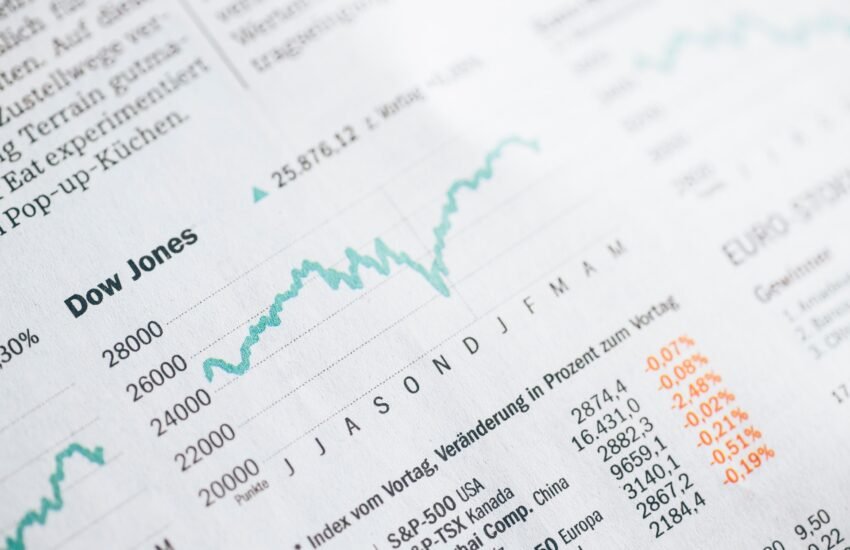Stock Trading System 101
Stock trading is not quite common knowledge. The reds and greens that cross the bottom of your TV screen may not concern most people; for most intents and purposes, even the average investor may not be too familiar with the stock trading system, nor would they need to.
It is an acquired skill, after all, one that one needs to be actively pursued.
If you’re looking to delve into the field of stock trading and improve your financial state, demystifying it should be the logical first step.
For your convenience, let us do just that.
Stock trading system basics
At its core, the stock market consists of exchanges – think of the NASDAQ and the New York Stock Exchange.
There, stocks are listed on exchanges, which track the supply and demand, and thus the price, of each stock.
Buyers and sellers create the market for the shares of stocks, much like any market – but unlike typical markets, brokers represent the traders and deal with the exchange on their behalf.
Market indexes
What people generally refer to when they say the stock market is up or down is, simply, the major market indexes.
This is a fundamental distinction to make when discussing the stock trading system, so let us briefly address it here.
Market indexes, such as the aforementioned NASDAQ and the Dow Jones Industrial Average, are often used as proxies for the overall market’s performance.
Market indexes track the performance of stocks, which either represent the entirety of the market or specific sectors of it.
This, in turn, can be used by investors to benchmark their investments’ performance and at times inform their stock trading decisions.
Brokerage
Brokers are usually employed by brokerage firms and such firms are most often a new investor’s safest option.
Brokerage is your gateway to the stock exchange system, and its quality will directly affect your investing experience.
Brokerage firms can vary from multinational firms to specialized local businesses, and offer a variety of broker types to suit different investment needs;
- Stockbrokers
- Bond brokers
- Commodities brokers
- All-purpose brokers
The availability of such specialized services naturally depends on the individual firms, but as far as accessing the stock trading system is concerned, experienced stockbrokers are the brokers one needs.
Brokerage accounts will need to be set up – these let you trade securities and stocks but are naturally subject to taxes and fees.
It is thus always in your best interest to research both such services and firms extensively and well in advance.
Stock trading types
At its core, the stock trading system entails two types of trading; namely, fundamental and technical analysis trading.
Fundamental
This type of trading opts to rely on extensive stock research.
In essence, it uses underlying information such as a company’s earnings and PE ratios to assess and predict stock value.
Technical Analysis
Conversely, this type of trading mostly disregards all information but price action.
Technical analysts hold that the fundamental information one needs is price action – and thus keeping track of its movements and creating predictive price pattern models is all one needs.
Stock trading styles
Similarly, private investors who delve into the stock trading system typically engage in three fundamental trading styles.
Those are far from secondary, stylistic choices, as the name may mislead one into believing, but have distinct differences in function.
Day trading
As the name states, day trading involves trades that will always be finished by the end of the trading session – trades are entered and exited on the same day.
Many stock charts, such as QQQ and AAPL, are excellent for day trading.
It is noteworthy, however, that capital restrictions apply to day trades, so it’s always advisable to consult your broker.
Swing trading
Unlike day trades, swing trades last more than a day and can last up to a month – most such trades typically conclude within a few days.
Given that swing trades are not subject to daytrade limitations and are overall more flexible, they are often preferable for most investors.
Longer-term position trading
Lastly, these trades can last from one month to many years – taking advantage of megatrends in the process.
This style is not often preferable as it entails tying up capital, but diversifying one’s portfolio can certainly come with investing in low-maintenance long-term stocks.
Diversification
At this point, it should be vital to touch on the significance of portfolio diversification.
The stock trading system is bound to the stock market by definition, and market setbacks are inevitable.
In essence, then, what portfolio diversification offers is safety from both unforeseen setbacks of an individual company and the inevitable market setbacks.
Typically there are two basic ways to diversify one’s portfolio;
- Investing in multiple types of stocks at once, and
- Mutual and index funds.
The two can, of course, be combined into one portfolio – and given that building a diverse portfolio of individual stocks is quite laborious, it is often a preferable solution.
Still, it is also highly viable to research companies based on location, since local market conditions may not affect all your stocks at once.
You may want to invest in the most profitable companies you can find in Brooklyn and Dallas, for example, to ensure that local conditions that affect one’s stocks will likely not affect the other’s.
Bull markets and bear markets, corrections and crashes
To elaborate on the aforementioned inevitable market setbacks, it is important to mention those stock trading system terms.
A bear market is one where multiple stock prices fall sharply across multiple indexes; 20% or more is the usual threshold.
Conversely, a bull market is one where economic growth solidifies the confidence of investors.
The two market types inevitably follow one another, both often signifying larger economic patterns such as depressions.
While it is vital to be aware that both are inevitable and neither is permanent, bull markets, fortunately, outlast bear markets on average.
Stock market corrections occur when the stock market drops by over 10%, while stock market crashes are sharper, unexpected stock price drops.
Corrections may occur during bull markets and subsequently resolve, while crashes may more often occur during a bear market – or signify that one is coming.
Still, most stock markets tend to accumulate value over time, since most bull markets outlast bear markets.
Paper trading
Lastly, even after you are equipped with the above knowledge and more, it is still in your best interest to engage in paper trading through any means or platform.
Paper trades simulate the stock market and are thus a great way to familiarize oneself with the stock trading system without financial risk.
They can help one become accustomed to keeping track of stocks and narrowing down what would work for them in real market conditions, from theory to practice.
Most notably, this is by no means a practice for novice investors either; seasoned traders engage in it to refine their skills and explore new strategies.




